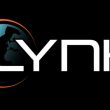Reporter’s notebook: IWCE 2005
So much happened last week at IWCE 2005 in Las Vegas that we couldn't report on all of it, even in a town where no one sleeps. Here are few items that, despite being buried in our notebooks, are still noteworthy.
In addition to telling MRT it would add an infrared digital camera to its Mobile Video Enforcer digital camera and video recording system by August — as well as the ability upload footage via a 4.9 GHz mesh network by the end of the first quarter of next year — Motorola announced the introduction of the MINITOR V pager designed for volunteer firefighters. The pager can be programmed on narrow- or wide-band channels in both the UHF and VHF bands, and offers improved sensitivity so firefighters can receive calls even in fringe or weak signal areas.
Motorola also said it has added the PR860 and PR1500 two-way radios designed for small- to medium-sized businesses, and the MIP 5000 dispatch software solution that leverages the company's voice over IP platform to enable users to "put radio dispatch anywhere on their existing network," said Michele Shaughnessy, marketing manager, in a statement.
Telex Communications introduced the PIB-223 dispatch-to-telephone interface for its Vega IP-based radio dispatch line.
According to Telex's Tim Klabunde, the PIB-223 enables several IP-based dispatch consoles to share a single phone line and eliminates echo that prevented full duplex phone conversations from occurring. "Now you get a natural-sounding conversation," Klabunde said.
Telex also is working with Airpath Wireless and the Education First Network to broaden the nation's first coast-to-coast inter-campus wireless communications system.
Telex will provide its Vega system to integrate two-way radios, cellular and analog phones, and IP-based devices used by campus staffs, while Airpath provides the roaming solution used by the system.
Pyramid Communications announced the introduction of the Centry II automatic vehicle location solution. The Centry II includes a GPS receiver, packet modem and GSM/GPRS transceiver. When used in conjunction with Pyramid's Street Light mapping software, the Centry II solution enables fleet drivers to display their location on their laptop screen, the company said. The unit also provides real-time monitoring of vehicle speed, stops and starts and direction changes. The data can be stored for future recall and playback; according to Pyramid, the Centry II can store more than 85 hours of data at five-minute update intervals, with the oldest data overwritten with each update.
DataLogic International, working with Radio IP, demonstrated the EncrypTAC security solution that offers two-factor authentication, FIPS 140-2 encryption with a minimum of 256-bit encryption and a migration path to AES encryption. Other companies that collaborated on the development of EncrypTAC include ActivCARD and Access DATA.
Pryme Radio Products introduced the PTG GPS speaker microphone, which integrates a GPS receiver and RF modem with a remote speaker microphone. The solution brings location capability to handheld radios, both trunked and conventional, without the need to add modems and GPS receivers to the radio, the company said. The PTG GPS speaker microphone currently is in beta testing, with deliveries scheduled to begin in Fall 2005, said Pryme's Vice President Bert Wollen.
Link Communications introduced the third iteration of its interoperability solution, the Tactical Communications Bridge. The TCB-3 triples the capacity of the TCB-2, fits into a 19-inch rack enclosure, supports analog, digital and P25-compatible radios, and is available in 16-channel or 24-32 versions, the company said.
Originally, the company thought the 16-channel version would be adequate, but a recent disaster simulation in St. Louis changed that thinking, said Allan Overcast, Link's president. "When you think of how many agencies converge on a major event, it really eats up channels," Overcast said.
Users can create up to 16 talk groups and multiple TCB-3 units can be deployed to create a parallel communications network that can be used for specific events. A software application ties the units to a central server to create a layer of redundancy, Overcast said. "So if one site goes down, you have backup and don't lose interoperability."
SandCherry introduced the Voice 4 Radio Message System, which enables users to send and retrieve voice messages from their two-way radios without the aid of a dispatcher. They can also retrieve text messages via a Web-based interface using a text-to-voice software application. The unit plugs into a mobile radio or base station and supports both conventional and trunked systems.
"When we looked at the market, the opportunity was there to improve the process at just about any enterprise where users are utilizing dispatcher time and [encountering] potential quality issues related to sending and receiving messages," said Dale Hartzell, SandCherry's vice president and general manager. "What we're trying to do is emulate voice mail on a two-way radio system. This solution provides self service to the user to send and receive messages and they also get the assurance that the message is correct and transmitted appropriately."
Hartzell added that radio-based voice mail solutions currently exist but that SandCherry's solution is different because it is centralized. "Radios don't have to be reprogrammed to implement this solution," he said. "The server that does the voice-mail capability actually is connected to the radio network and looks like another user on the network, so anybody can have access to it."

















